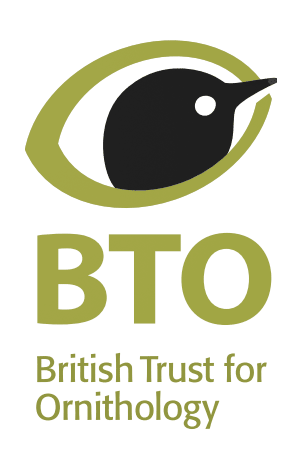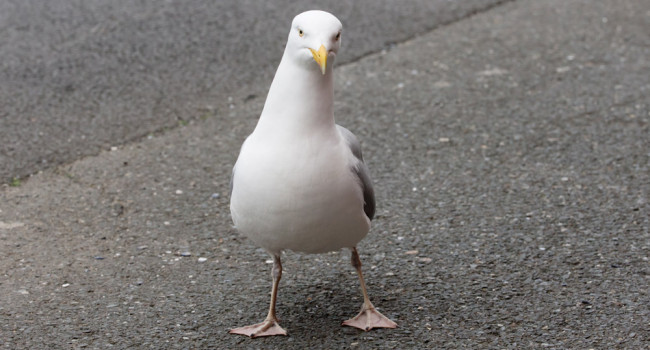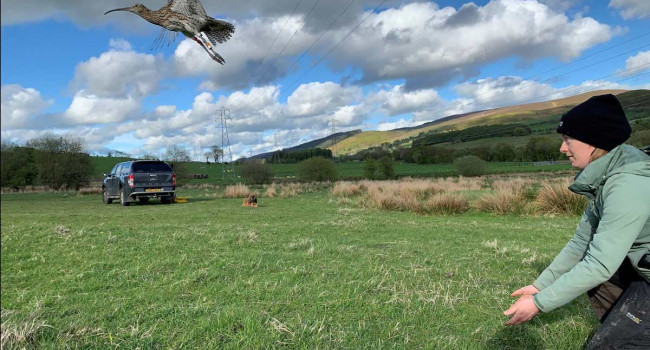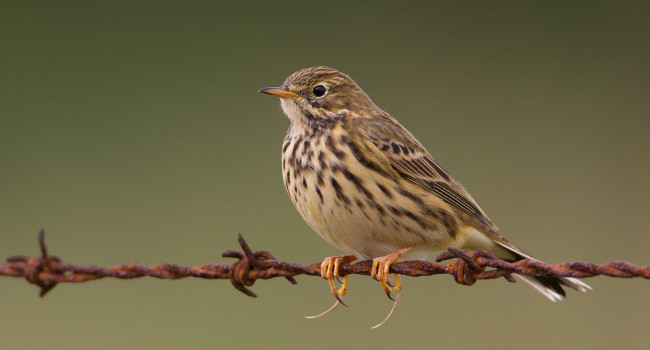The oldest of its kind
01 Jun 2014 | No. 2014-32
The oldest known Buzzard in the wild has clocked out at 28 years, 1 month and 11 days, breaking the previous record by nearly three years. This record breaking bird features in the latest report from the British Trust for Ornithology (BTO).
1 month and 11 days.
Each year, the BTO publishes a report revealing the latest information to emerge from the network of bird ringers, who collectively catch and ring wild birds under licence for the benefit of conservation. During 2013, these specially trained volunteers fitted just under a million rings and recaptured 240,000 birds that had been ringed previously. The information they collect informs conservation policy, revealing some of the factors that influence bird populations, their movements and their longevity.
Buzzard 'GK41814' was ringed as a nestling at Sunbiggin Tarn, Orton, Cumbria on 16 June 1985 and found dead 12km to the northeast of there on 27 July 2013. The typical lifespan of a Buzzard in the wild is 12 years, so GK41814 is a remarkable bird.
Rob Robinson of the BTO, commented, “Ringing provides the only way to get this sort of survival information, which is invaluable for understanding how our bird populations change.”
Other record breaking birds in the 2013 online ringing report http://www.bto.org/volunteer-surveys/ringing/publications/online-ringing-reports include a 32 year old Herring Gull that was seen alive in Clydach, Glamorgan and identified from the colour rings that it was wearing, an 11 year old Great Spotted Woodpecker that was found predated at a golf club in Norwich, Norfolk, and a Cumbrian Marsh Tit that has reached the ripe old age of 10 years, 4 months and 25 days and still counting. The typical lifespan of a Marsh Tit in the wild is only two years.
It not just about old birds though, recaptures of two nestlings ringed in 2012 that were caught again in 2013 highlight differences in behaviour for different species. Reed Warbler 'Y512371' was hatched in June 2012 on the Constant Effort ringing Site (CES) at Longham Lakes in Dorset, migrated to Africa and back, and started to breed one year later at the site he was born, being caught on 24 July 2013.
However, Pied Flycatcher 'L699165' also hatched in June 2012 (at Lake Vyrnwy in Powys) was caught again in June 2013, breeding on the shores of Lake Bassenthwaite in Cumbria, 213km (132 miles) to the north. By monitoring where young birds end up breeding we can start to understand how distribution ranges change. As climates change, for example, we expect to see more individuals heading north to breed.
950,000 birds were ringed by 2,800 trained volunteers in 2013, providing data that helps the BTO piece together complete life histories for many of the birds that are seen in Britain.
Jacquie Clark, Head of the British and Irish Ringing Scheme, commented “everyone can help, if you find a bird with a ring on tell us the details at www.ring.ac”.
Notes for Editors
- The BTO Ringing Scheme is funded by a partnership of the British Trust for Ornithology, the Joint Nature Conservation Committee (on behalf of: Council for Nature Conservation and the Countryside, Natural Resources Wales, Natural England and Scottish Natural Heritage), The National Parks and Wildlife Service (Ireland) and the ringers themselves.
- The BTO is the UK's leading bird research charity. A growing membership and up to 60,000 volunteer birdwatchers contribute to the BTO's surveys, collecting information that underpins conservation action in the UK. The BTO maintains a staff of 100 at its offices in Thetford, Stirling, Bangor (Wales) and Bangor (Northern Ireland), who analyse and publicise the results of surveys and projects. The BTO's work is funded by BTO supporters, government, trusts, industry and conservation organisations. www.bto.org
- The online ringing report is published annually by the British Trust for Ornithology and can be found here. http://www.bto.org/volunteer-surveys/ringing/publications/online-ringing-reports
- The Constant Effort Sites (CES) scheme is the first national standardised ringing programme within the BTO Ringing Scheme and has been running since 1983. Ringers operate the same nets in the same locations over the same time period at regular intervals through the breeding season at over 120 sites throughout Britain and Ireland.
The Scheme provides valuable trend information on abundance of adults and juveniles, productivity and also adult survival rates for 25 species of common songbird.
Contact Details
Paul Stancliffe
(BTO Media Manager)
Office: 01842 750050
(9am to 5.30pm)
Mobile: 07585 440910 (anytime)
Email: press [at] bto.org
Images are available for use alongside this News Release.
Please contact images [at] bto.org quoting reference 2014-32
The BTO has an ISDN line available for radio interviews.
Please contact us to book an interview
Office: 01842 750050







Share this page